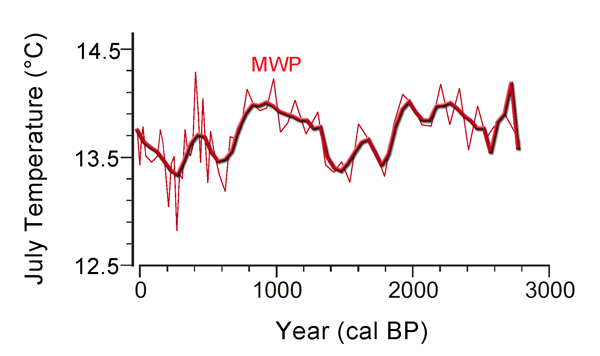Reference
Clegg, B.F., Clarke, G.H., Chipman, M.L., Chou, M., Walker, I.R., Tinner, W. and Hu, F.S. 2010. Six millennia of summer temperature variation based on midge analysis of lake sediments from Alaska. Quaternary Science Reviews 29: 3308-3316.
Description
Clegg et al. conducted a high-resolution analysis of midge assemblages found in the sediments of Moose Lake (61°22.45'N, 143°35.93'W) in the Wrangell-St. Elias National Park and Preserve of south-central Alaska (USA), based on data obtained from cores removed from the lake bottom and a midge-to-temperature transfer function that yielded mean July temperatures (TJuly) for the past six thousand years, the last 3000 of which are reproduced in the figure shown below. Based on this figure, the MWP occurred between approximately AD 750 and 1250 and peak MWP warmth was approximately 0.45 °C greater than peak CWP warmth.

Mean July near-surface temperature (°C) vs. years before present (cal BP) for south-central Alaska (USA). Adapted from Clegg et al. (2010).




